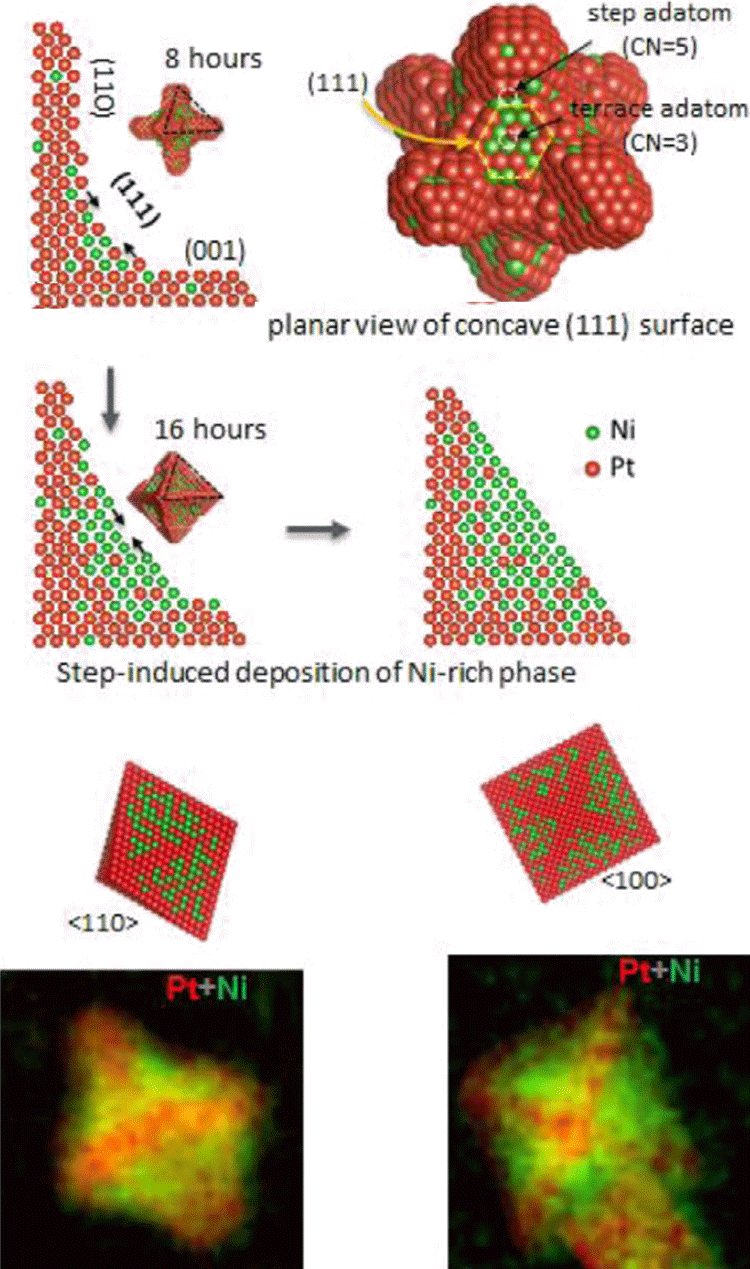The growth and degradation of binary and ternary octahedral Pt–Ni-based fuel cell catalyst nanoparticles
February 2017
by Marc Heggen, Martin Gocyla and Rafal E. Dunin-Borkowski
Coupling Advances in fuel cell technology depend strongly on the development of affordable, active, and stable catalysts. For example, octahedral Pt–Ni alloy nanoparticles show exceptional activity for the oxygen reduction reaction in fuel cell cathodes as a result of the presence of highly active {111} facets.

Here, ER-C researchers review a selection of recent transmission electron microscopy studies that address the correlation between the catalytic performance of octahedral Pt–Ni-based nanoparticles and their atomic-scale structure and composition. Strategies for the growth of binary Pt–Ni and ternary Pt–Ni–TM (TM = transition metal) nanoparticles are described, with a focus on understanding how their structure and compositional anisotropy is related to their catalytic activity and stability. A description of the morphological changes and compositional degradation effects that can occur in electrochemical environments is given.
Changes in nanoparticle shape, including the loss of highly active {111} facets due to dealloying from Ni-rich facets and Pt surface diffusion, are discussed as important reasons for catalyst degradation. Finally, strategies to prevent degradation, e.g. by surface doping, are addressed. The growth, segregation, and degradation mechanisms that we describe highlight the complexity with which octahedral alloy nanoparticles form and evolve under reaction conditions.
Further reading:
Marc Heggen, Martin Gocyla and Rafal E. Dunin-Borkowski:
The growth and degradation of binary and ternary octahedral Pt–Ni-based fuel cell catalyst nanoparticles studied using advanced transmission electron microscope
Advances in Physics : X 2 (2017) 281
